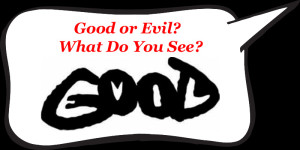 After every Thanksgiving dinner, my father would say, “I have that good old miserable feeling.” My young self would wonder, is it good or is it miserable? – how can it be both, since one is desirable and one is undesirable – opposites!
After every Thanksgiving dinner, my father would say, “I have that good old miserable feeling.” My young self would wonder, is it good or is it miserable? – how can it be both, since one is desirable and one is undesirable – opposites!
We all know the English language pretty well, and we think we understand the concept of opposites also pretty well, right? Careful – it’s not as clear as you think. Especially in the world of emotions and feelings, that embody the important world of communication.
Quick – what’s the opposite of “LOVE”? – “hate”, you reply pretty quickly. But is it really?
Opposite is defined as “having a position on the other or further side of something; diametrically different, a kind of contrary”.
So if you don’t love someone or something, it doesn’t mean necessarily that you hate it or them. You just don’t love or care for it. So the opposite of LOVE is INDIFFERENT, neutral, disinterest, take it or leave it kind of feeling. But certainly not hate.
Here’s another one: what’s the opposite of “HAPPY”? – I’m hearing a “sad” coming off your lips. But again, thinking clearly, when we are not happy, we aren’t necessarily sad or unhappy, we are just neutral. Happiness is on a 1-5 scale that ranges from:
- Not happy – mild discomfort with the person or situation
- Neutral – neither happy or unhappy
- Happy – pleasant feelings with the person or situation
- Very happy – joyous, high feelings of pleasure
- Extremely happy – ecstatic, blissful, best day of my life feelings
The beauty of happiness, in ourselves and in others, is that we control what state of happiness we’re in, simply by framing things in our mind. We can easily make ourselves any of the first 3 stages by reminding ourselves of our good fortunes versus how things could be so much worse. To get to the higher 2 stages of happy usually takes external circumstances to bring about, but there’s no reason not to be in a constant stage 3 state. Most people live most of their time in stage 2, borderline stage 1. So unfortunate; so unnecessary to do to ourselves.
How about this one: the opposite of “FAITHFUL”? – you’re catching on that it’s not “unfaithful” is it? To be faithful is to be loyal, reliable, steadfast. Many times religions call their followers The Faithful – and the nonbelievers? We’re branded “Infidels” in the Muslim realm, which translates, not to unfaithful, but to “non-believer”. So the opposite of faithful is actually “apathetic” – don’t know, don’t care.
The point is not to paint the world as black or white in your communication and in your thinking. There’s a lot of gray out there; the world is mainly shades of gray (a valid expression long before the book came out and tainted it).
We want to shortcut, cut to the chase, see the pattern and quickly take the obvious answer. And sometimes that works out just fine. But other times a little more ‘gray’ thought is called for. Things are rarely fully as they appear, especially in communicating with other people. Thinking beyond black and white to see the gray in between is an easy skill that just requires taking a split second of time to consider what’s not obvious.
